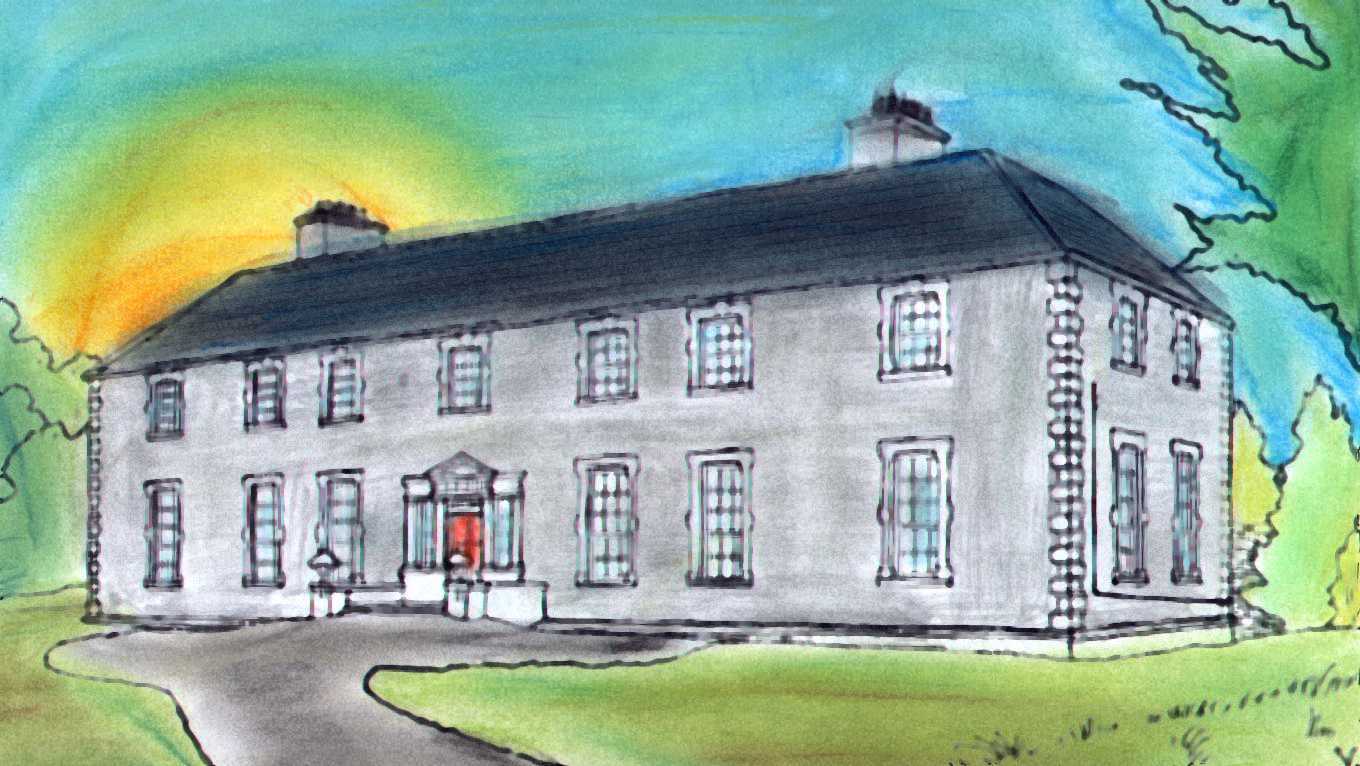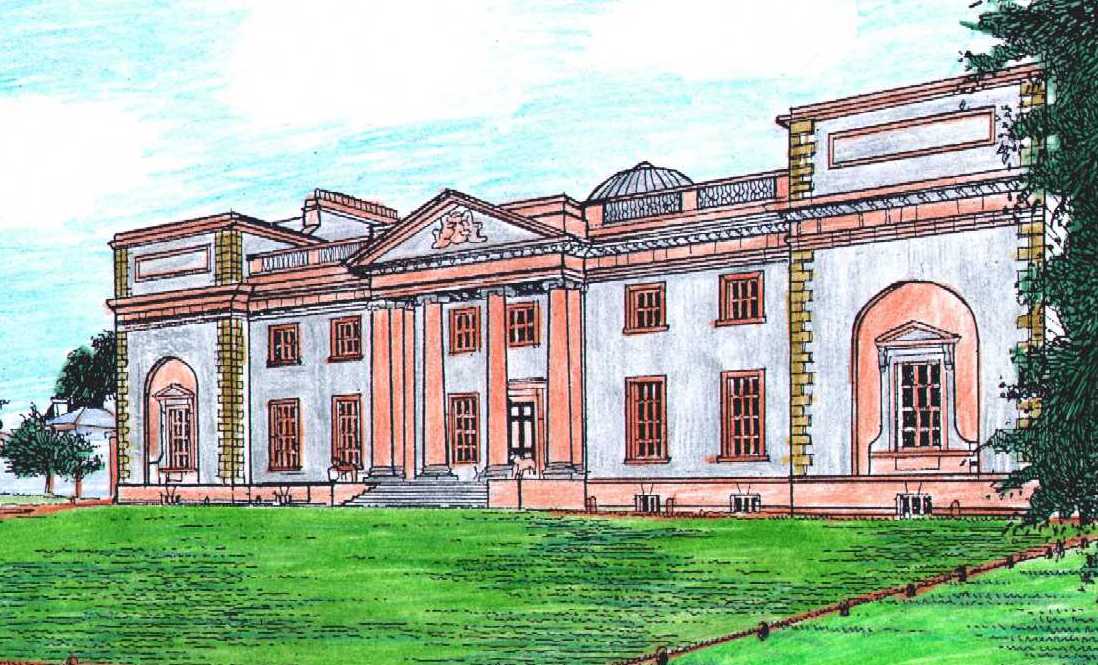
The Gaelic
or Irish name for The Heath is An Fraoch Mór. Fraoch
means 'heather' and mór means 'big'. The Heath is a
flat area of roughly 425 acres, situated beside the main
Dublin-Cork road, about four miles from the town of Portlaoise.
The area used to be known as The Heath of Maryborough.
Maryborough is the old name for Portlaoise. It was called
this in honour of the English Queen Mary whose armies planted
Laois in the sixteenth century. In 1920 the name was changed to
Portlaoise which is Irish for 'the fort of Laois'. Today, The
Heath is a common, but there are marks or ridges on the surface
which, according to some people, prove that the land was once
cultivated.
In the summer, The Heath is covered in lovely
heather and yellow furze blossoms. All over The Heath there are
sheep that are free to roam wherever they like. Sometimes they
come into the school grounds and Mr Dunne gets mad! Near the
school there is a small pond. Swans and ducks go there in the
winter. There is a well-known golf club right beside the pond.
In 1997, the Portlaoise By-Pass was officially opened. This
motorway runs right through The Heath and has caused great
changes in the local landscape.

In ancient times, chariot races were held on The Heath and, in the last century, the area was famous for horse racing. The races eventually lost their popularity because the prizes weren't attractive enough. In 1887, the winner of the main race was presented with a silver cup filled with Guinness. Late in the last century too, there was a Cricket Club on The Heath. The Heath was also the training ground for soldiers (the Fourth Battallion of the Leinster Regiment) and the old race stand was used as the Officers' Mess.

THREE LOCAL LANDMARKS
The Rock of Dunamase.
This hill of hard limestone rock (about 60 metres above ground
level) was marked on a map by Ptolemy in the 2nd century. It
was called 'Dunum'. In Celtic Ireland, it was known as Dún
Masc, the fort of Masc. Masc was a grandson of the King of
Leinster. In 843, Dunamase was plundered by the Danes. In the
12th century, it belonged to Dermot Mac Murrough, King of
Leinster. He was the man who invited the Normans to Ireland.
Heath House.
It is believed that this big house was built in 1727 by Warner
Westenra whose family came originally from Holland. Since
then, the house has had at least a dozen different owners. These are
the family names: Saunderson (1765-1771), Burdett (1771-?),
Gore (1804), O'Reilly (1804-1864) and Wall (1864-1880).
Emo Court. Work on
this fine mansion (designed by the famous architect James
Gandon) was started by the 1st Earl of Portarlington around
1790, but it wasn't completed until 1860, when the huge copper
dome (known as a rotunda) was added.  After the Norman Invasion in 1169, Richard de Clare, Earl of
Pembroke (known as Strongbow) married Dermot's daughter, Aoife,
and inherited the castle. In the 14th century, it was taken
over by the O'Moores and, for the next two hundred years, the
Irish and English fought over it. The O'Moores were the most
famous Laois family and, even today, Laois is sometimes called
'The O'Moore County'. In 1650, Dunamase was destroyed by Oliver
Cromwell's colonels Hewson and Reynolds. Today the castle is in
ruins.
After the Norman Invasion in 1169, Richard de Clare, Earl of
Pembroke (known as Strongbow) married Dermot's daughter, Aoife,
and inherited the castle. In the 14th century, it was taken
over by the O'Moores and, for the next two hundred years, the
Irish and English fought over it. The O'Moores were the most
famous Laois family and, even today, Laois is sometimes called
'The O'Moore County'. In 1650, Dunamase was destroyed by Oliver
Cromwell's colonels Hewson and Reynolds. Today the castle is in
ruins.
 The famous Gaelic scholar
and placenames expert, John O'Donovan(1806-1861) was
friend of Myles O'Reilly and, at one stage, he spent six months
in Heath House recovering from an illness. In 1880, the house
was bought by Charles Blake who came from County Mayo. His
family made it very famous as a racing stable. Many horses
trained there won important races in Ireland and England.
Colonel A.J Blake was Leading Trainer in 1930, 1931 and 1938.
The Blakes eventually left Heath House in the early 1960's
and it is now owned by a Dublin architect and writer named
Uinseann Mac Eoin.
The famous Gaelic scholar
and placenames expert, John O'Donovan(1806-1861) was
friend of Myles O'Reilly and, at one stage, he spent six months
in Heath House recovering from an illness. In 1880, the house
was bought by Charles Blake who came from County Mayo. His
family made it very famous as a racing stable. Many horses
trained there won important races in Ireland and England.
Colonel A.J Blake was Leading Trainer in 1930, 1931 and 1938.
The Blakes eventually left Heath House in the early 1960's
and it is now owned by a Dublin architect and writer named
Uinseann Mac Eoin.
 In
1930 the house was sold to the Jesuit Order of priests who
used it as a seminary. The well-known Irish writer Benedict
Kiely spent a short while there in the late 1930's. In 1969,
it was bought and beautifully restored by Mr Cholmley-Harrison.
He later sold it to the government and it is now run by the
Board Of Works. Each year thousands of people come to admire
the house and walk around the lovely gardens. Sometimes
classical music recitals and poetry readings are held there as
well.
In
1930 the house was sold to the Jesuit Order of priests who
used it as a seminary. The well-known Irish writer Benedict
Kiely spent a short while there in the late 1930's. In 1969,
it was bought and beautifully restored by Mr Cholmley-Harrison.
He later sold it to the government and it is now run by the
Board Of Works. Each year thousands of people come to admire
the house and walk around the lovely gardens. Sometimes
classical music recitals and poetry readings are held there as
well.

SORRY, LEONARDO....
NO MORE, NO LESS PLAYGROUND GAMES HOW'S SHE CUTTIN'? GOODBYE TO PRIMARY SCHOOL
 FORTY FACES
FORTY FACES
 ARCHAEOLOGY
ARCHAEOLOGY  MURDERED ARTISTS
MURDERED ARTISTS
 PICTURES OF OUR AREA
PICTURES OF OUR AREA  OUR MILLENNIUM
OUR MILLENNIUM  GAEILGE
GAEILGE
 PLACENAMES
PLACENAMES  A DAY IN THE LIFE
A DAY IN THE LIFE  HISTORY
HISTORY  TODAY
TODAY
 THE CAT LAUGHS?
THE CAT LAUGHS?  OUR WRITING LOCAL NAMES
OUR WRITING LOCAL NAMES  MEMORIES
MEMORIES
 HOW WE WELCOMED...
HOW WE WELCOMED...  INTERESTING FACTS
INTERESTING FACTS  SPORTS
SPORTS